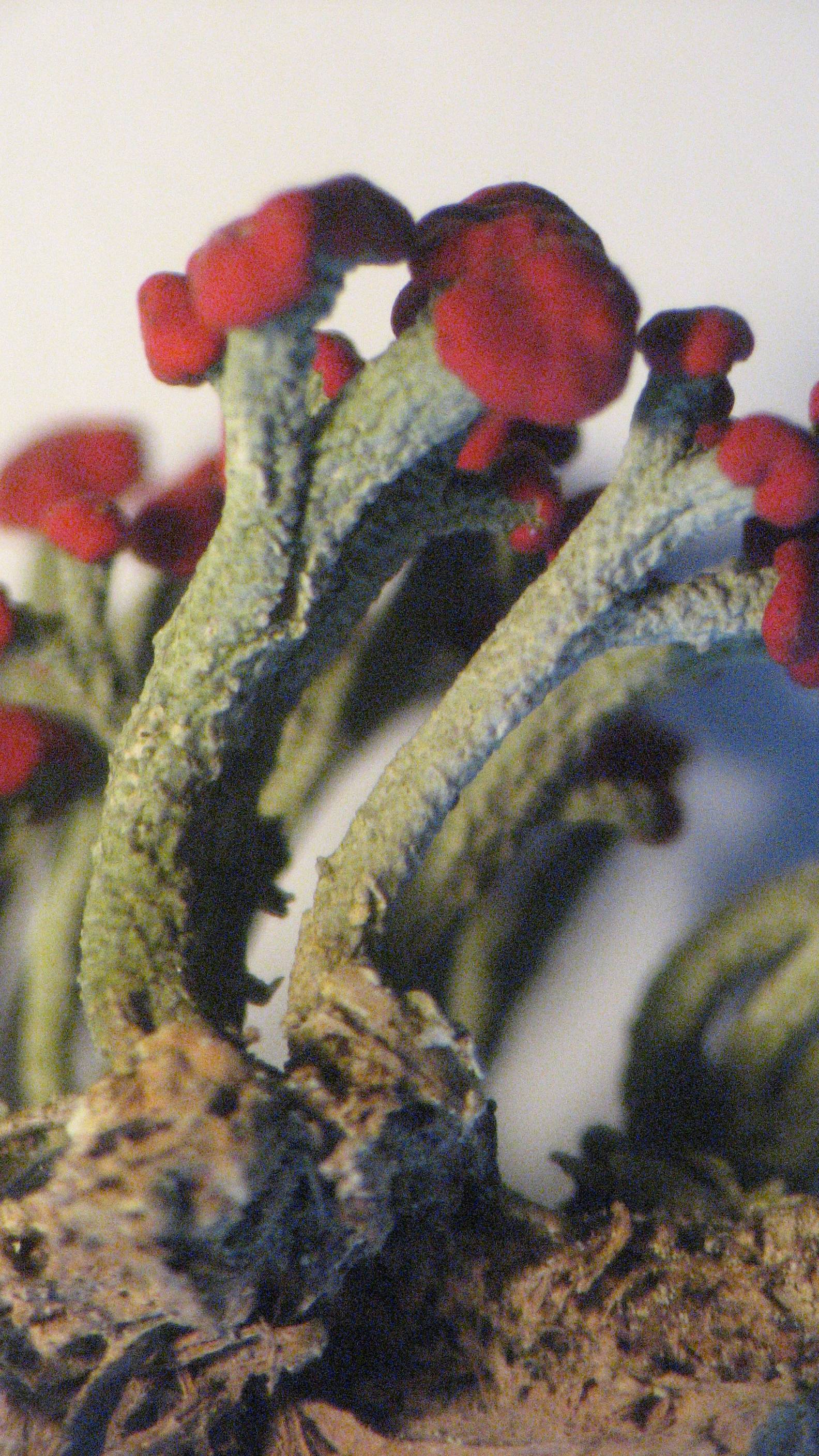
Consortium of Lichen Herbaria
- building a Global Consortium of Bryophytes and Lichens as keystones of cryptobiotic communities -
- Home
- Search
- Images
- Species Checklists
- US States: O-Z >
- US National Parks
- Central America
- South America
- US National Parks
- Southern Subpolar Region
|
Family: Cladoniaceae |
Nash, T.H., Ryan, B.D., Gries, C., Bungartz, F., (eds.) 2002. Lichen Flora of the Greater Sonoran Desert Region. Vol 1. Life habit: lichenized Thallus: composed of primary (basal, horizontal) and secondary (erect) parts cortex: dense, composed of ± vertically-oriented hyphae medulla: usually 2-layered; the outer layer: white, composed of ± loose hyphae, containing algal glomerules; the inner layer: hyaline or white, cartilaginous, with conglutinate hyphae surrounding the central canal Primary thallus: composed of basal squamules, closely adpressed to the substrate, or ascending to erect, rounded to elongate, entire or variously indented, sorediate or esorediate, sometimes persistent, occasionally dominant upper surface: corticated lower surface: composed of ecorticate layer of hyphae, hyphae roughly parallel-oriented, radiating in a flabelliform pattern from the basal portio, which is generally attached to the substrate Secondary thallus: consisting of hollow to rarely solid podetia, growing from upper surface or margins of primary thallus, blunt, pointed, or cup-forming, simple or branched; branch axils: closed or perforate; perforations: occasionally enlarging (forming funnel-like structures often called "open cups") and deforming surface: variably corticate to ecorticate, generally composed of some combination of continuous cortex, cortical granules, verruculae, soredia, and squamules photobiont: primary one a Trebouxia, secondary photobiont absent Ascomata: lecideine apothecia, borne at apices of podetia, on cup rims, at branch apices, or rarely sessile on basal squamules; discs: red, pale or dark brown, darkening with age and sometimes blackening asci: cylindrical to elongate-clavate; apex: Porpidia type, with strongly amyloid (I+ blue) apical dome, including very narrow weakly amyloid central zone surrounded by a tube-like, strongly amyloid zone; wall: nonamyloid except for outer layer; 8-spored ascospores: biseriate, ellipsoid to oblong-ellipsoid, simple to rarely one-septate, hyaline, oblong or ovoid, 6-16 (-24) x 2-6 micro meter Conidiomata: pycnidial, borne at apices of podetia, on cup rims, at branch apices, or on basal squamules, infrequently arising laterally on podetia, red, brown or carbonaceous to blue-black, cylindrical to urn-like (ampullaceous), short-stalked or sessile, often constricted at base; containing hyaline or red gelatin conidia: sickle-shaped, rarely straight, hyaline, 3-10 (-14) x 0.5-1 micro meter Secondary metabolites: depsides, depsidones, dibenzofurans and derivatives (incl. usnic acids), terpenoids, aliphatic acids, and quinone pigments Geography: arctic regions to Antarctica, tundra to tropical forests but widely absent from arid regions Substrate: on soil, especially acidic humus and sand, rotting wood, tree bases and trunks, mossy or bare rocks. Notes: It is characterized by punctiform pseudocyphellae on upper surface, perforate apothecia with large, ellipsoid spores, and bifusiform conidia. |
Powered by Symbiota









